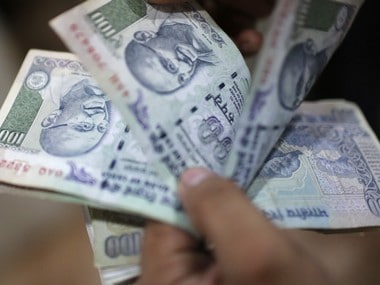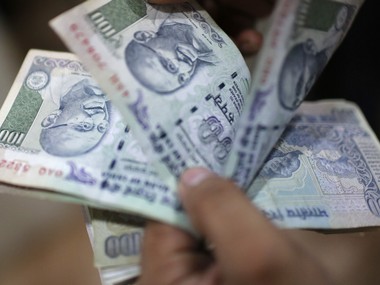Raghuram Rajan, former governor of the Reserve Bank of India (RBI) once observed that uncertainty of any sort results in volatility. The government gave us a taste of that when on 27 December, 2017 the Finance Ministry in a press release announced that it would increase its market borrowing by Rs 50,000 crore in January and February 2018. Bond yields, that had been relatively stable, jumped. From 7.17 percent, the rate at which the newest 10-year government bond had been issued just a couple of days earlier, they went to 7.4 percent. After some up and down movement, yields appeared to settle, before being upended by another twist. In remarks delivered at the annual dinner of the Fixed Income Money Market Dealers Association of India (FIMMDDA), RBI deputy governor Viral Acharya, stirred the pot a little more, when he said that banks should manage their own interest rate risks, rather than depend on the central bank to help them out every time. Bond yields had already been rising, albeit slowly, on speculation about fiscal slippage – that the government would not meet its deficit target of 3.2 percent of GDP; taken together with these recent developments, they jumped, before stabilising at around 7.27 percent. ICRA, the ratings agency, put the estimated the loss on banks’ bond portfolios at about Rs 16,500 crore. Not exactly good news in the final quarter of the financial year. [caption id=“attachment_4278025” align=“alignleft” width=“380”]  Representational image. Reuters[/caption] Now, volatility might come right back. The government, on 17 January 2018, announced that the increase in borrowing would actually be lower, at Rs 20,000 crore. How is the government going to achieve this? In the auctions after the 27 December announcement, the central bank accepted fewer bids, amounting to a reduction of Rs 15,000 crore. In addition, the three auctions of dated securities in the remaining weeks of the financial year will be for Rs 10,000 crore each, instead of Rs 15,000 crore each. Some analysts have wondered whether this was the consequence of overconfidence that may have been misplaced. Because, the announcement about increased borrowing in effect confirmed the rumours about fiscal slippage: revised estimates of tax collections through the Goods and Services Tax (GST) were clearly becoming a concern. Could the government have handled this better? Yes. Rather than use the dated securities, the increases could have been affected through Treasury Bill or T-Bill auctions, ranging between 14 and 91 days. The volatility zone for T-Bills is much narrower given their short duration. Besides, tax revenues in between end-December and March, or the last quarter, account for one-third of total tax collections. Not much has been said about moving the date of the Union Budget presentation to 1 February, but its implication also casts a long shadow. Under the old regime, when the Union Budget was presented on 28 February, discussion and debate would take up March and April. The spending year, it we could call it that, began on June, even or 1 July. That’s why the government’s borrowing programme is skewed towards the first six months of the year. In the new dispensation, spending begins much earlier, even 1 April. The government’s cash flow operations are disrupted, so to speak, and need some re-adjustment. Anecdotes suggest that governments have often asked companies to pay a little extra advance tax in June – say between Rs 50 and 100 crore per company, especially among large firms – that they could get refunds on or adjust otherwise. Examine the flow structure of the borrowing programme, and a pattern emerges that aligns with two other aspects: 90 per cent of the budget deficit is covered in the first three quarters, and just 10 per cent in the last one. Two-thirds or less of tax revenue is collected in the first three quarters, and one third or more in the last. How much of this makes a difference, or has impact? Here are a couple of other things to be kept in mind as we enter the first quarter of the next financial year. To address rural distress, and raise farm incomes, there may be an increase in minimum support prices (MSP), which translates into higher food prices and higher inflation. Many economists think consumer price index inflation (CPI) will reach 6 percent around mid-2018. At 6 percent, we are at the higher end of the RBI’s inflation corridor, so interest rate cuts become impossible. In the best-case scenario, the RBI’s tone could be hawkish. Global bond yields are also rising, so some of that will affect Indian bond yields. Some experts put the 10-year bond yield to hit 7.5 per cent or thereabouts by September 2018. Global commodity prices are also firm, so landed costs of imported goods are higher. All of which translates into some exchange rate depreciation, to add to the spice of our challenges. That’s the thing about volatility: It’s not helpful. As George Soros, the man who made his billions by betting against the trend, once said, “the reality is that financial markets are self-de-stabilising; occasionally, they tend towards disequilibrium, not equilibrium.” The last thing that markets need in these circumstances is the government to make it worse. For full coverage of Union Budget 2018 click here .
The government’s cash flow operations are disrupted, so to speak, and need some re-adjustment.
Advertisement
End of Article


)
)
)
)
)
)
)
)
)



